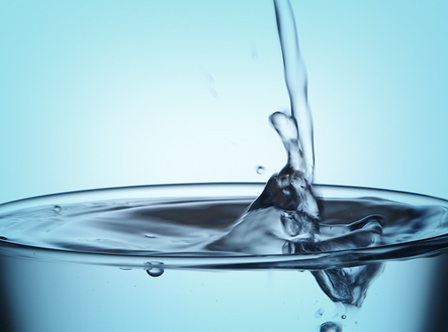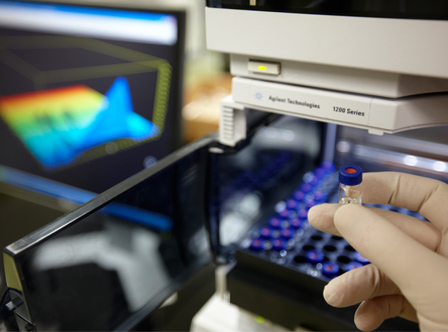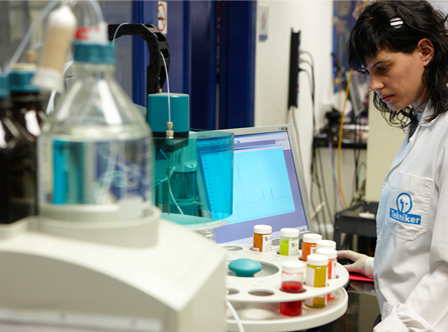PROJECTS
URA //
Technology at the service of water quality



The R+D centre is recommending that the acceptable environmental impact of pharmaceutical products and other emerging contaminants present in the water be specified.
The residues of a whole host of natural and synthetic chemical products that are not routinely measured turn up dissolved in the waste water at water treatment plants every day. They are materials technically known as emerging contaminants.
In order to obtain more and better information on emerging contaminants, the Basque R+D centre IK4-TEKNIKER has used the most advanced water analysis techniques, in which it has expertise, to produce a detailed study of the presence of these materials in the sewerage network before and after they are treated in the wastewater treatment plant of Galindo, Sestao (Bizkaia, Basque Country), which belongs to the water authority "Consorcio de Aguas Bilbao Bizkaia".
Two things have made this study possible: funding from the Basque Water Bureau (URA), and the pioneering nature of the Consorcio de Aguas Bilbao Bizkaia in the conducting of water analyses. Both have made collaboration with IK4-TEKNIKER possible; and the R+D centre has made available its advanced technology in this field to conduct one of the few studies carried out on this level in Spain. Specifically, the Basque R+D Centre has used liquid and gas chromatographic techniques (physical methods to separate complex mixtures), advanced characterization methods and a detailed analysis of the contaminants using state-of-the-art technology, like chromatographic columns, mass spectrometers and the latest filtering and extraction techniques.
The waters treated at the water treatment plant Estación Depuradora de Aguas Residuales (EDAR) in Galindo include domestic urban waters, industrial waters and hospital waste water; the plant handles the contaminating burden of 1.5 million inhabitants.
The results of the analysis carried out by IK4-TEKNIKER show that many of the chemical products are removed in the cleaning process. However, others are resistant to this process, and the lack of knowledge about their effects on living beings and the lack of legislation in this respect recommend that knowledge about them should be expanded.
So the IK4-TEKNIKER study recommends that the emission of compounds at their point of origin be reduced and that their entry into the environment be regulated through public awareness. To facilitate these tasks, the Basque R+D centre has also classified and correlated the emerging contaminants with environmental and time factors to be able to analyse where they might originate from.
Environmental impact
IK4-TEKNIKER takes the view that the acceptable environmental impact of pharmaceutical products and emerging contaminants needs to be specified. These products are not subject to environmental assessment before being put on the market and, despite being safe for use in humans, their impact on the environment has yet to be fully determined.
The method that IK4-TEKNIKER has put into practice to detect chemical products in waste water entails analytical techniques involving gas chromatography with mass detectors and liquid chromatography with triple quadrupole mass detector. Furthermore, when the samples are characterised, a multitude of water parameters, like pH, the biological demand for oxygen or the amount of metals, have been analysed. The results have revealed that, apart from organic waste, the waters contain traces of commonly used drugs like ibuprofen, personal hygiene products and drug residues.
The first phase of the Galindo treatment plant came into service in 1990. The plant currently processes 350,000 cubic metres of waste water per day with a maximum flow of 12,150 litres per second. The water treatment at the plant in Sestao starts by removing the larger solid waste. Then the organic material suspended in the water settles in the form of sludge at the bottom of the primary settling tanks. In the next and final step, biological treatment is applied to remove carbonaceous and nitrogenated matter. The primary, biological sludge resulting from the process is incinerated to produce energy.
The treatment process at the plant removes a very high percentage of waste from illegal drugs, analgesics, hormones and lipid-lowering drugs that manage to seep once again into the watercourses. However, other products like tranquillizers or antibiotics are more resistant to the treatment process.
IK4-TEKNIKER, sustainable technology
IK4-TEKNIKER’s participation in this project falls within the line of work that the Eibar-based R+D Centre is developing in the field of ecology and environmental sustainability, through which it is carrying out ecological developments in its different areas of specialisation. This enables it to apply sustainable technology to a whole host of sectors, like the automotive or transport sectors, as well as to energy and industrial production.
There is a line of actions that are making a full impact across the board in all the applications referred to in the developments that IK4-TEKNIKER is currently carrying out in this sphere. Featuring are ecological fluid formulation, the elimination of toxic components in formulations, the use of waste products (like glycerine) as a raw material in new compounds, the elimination of toxic compounds in coatings, the minimising of the environmental impact of the life cycle of a range of products, and ecodesign in machine tools or sustainability in water management.
With experience spanning nearly 30 years in research into applied technology and its transfer to companies, the IK4-TEKNIKER R+D centre has achieved a high degree of specialisation in four major areas (Precision Engineering and Mechatronics, Surface Engineering, Production and Automation Engineering, and Manufacturing Technologies), which enables it to put its state-of-the-art technology at the service of any kind of task.



